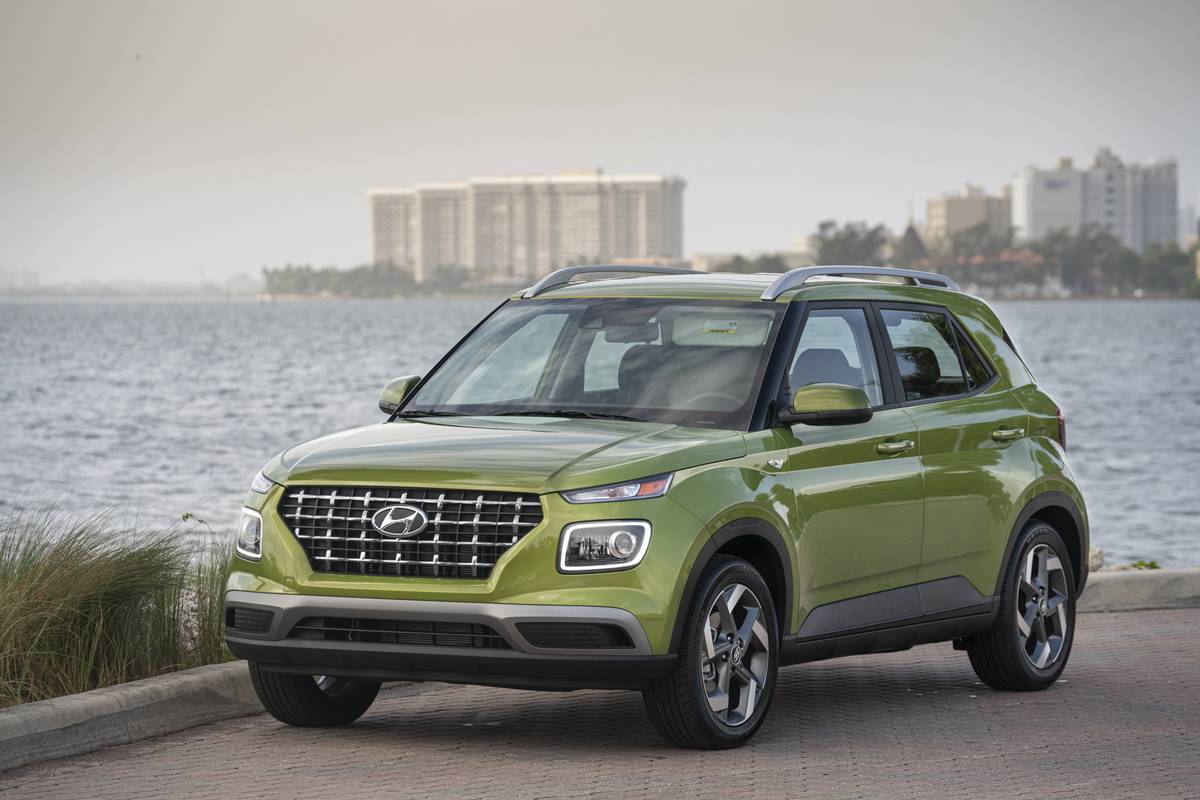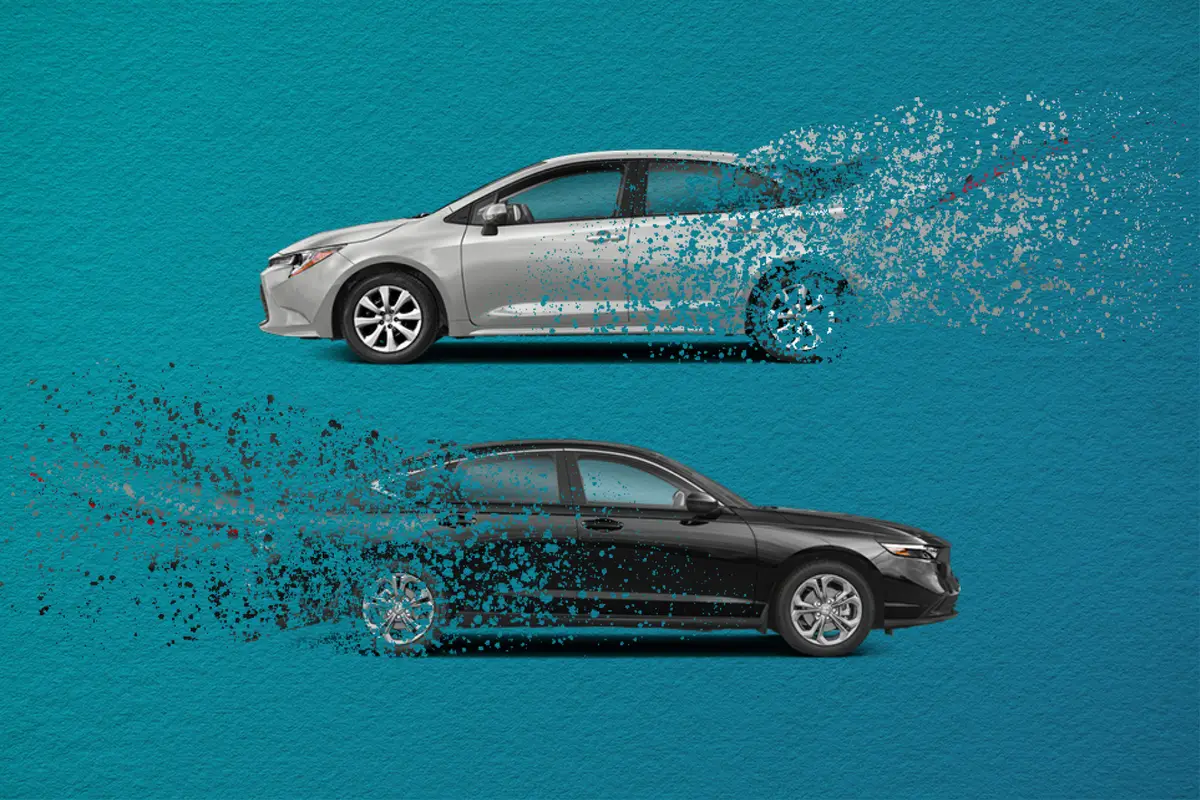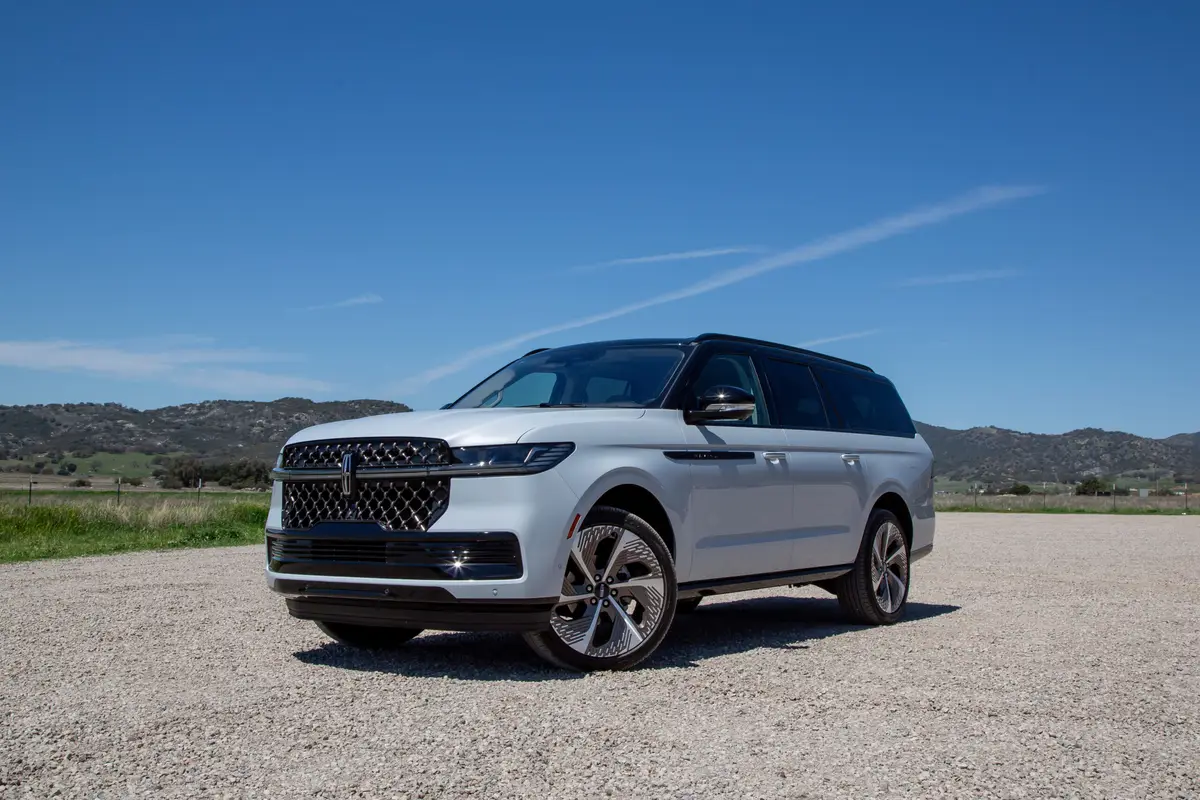2002 Lamborghini Murcielago: What's New
Vehicle Overview
After more than a dozen years on the market, Lamborghinis devilishly sculpted Diablo coupe is fading into the sunset. It will be replaced by a brand-new, mid-engine model called Murciélago, a name purported to be taken from that of a famed fighting bull of the 19th century. The name goes on the latest version of a supercar from the well-known maker of exotic sports cars. After a world debut at Germanys Frankfurt Motor Show in September 2001, the Murciélago made its initial North American appearance at Detroits auto show in January 2002.
Like the Diablo, the new model comes only as a two-passenger closed coupe. Equipped with permanent all-wheel drive, the Murciélago holds an enlarged, 6.2-liter version of the engine that powered the Diablo 6.0 VT; it cranks out an eye-opening 580 horsepower. The engines horsepower is enough to yield a 0-to-60-mph acceleration time of 3.5 seconds, and the car can reach a top speed that approaches 230 mph, according to the automaker. The first six-speed-manual transmission installed in a Lamborghini comes in the Murciélago.
Lamborghini was once an independent company and later was affiliated with other automakers; today, Audi AG owns the Italian marque. Fifteen U.S. Lamborghini dealers will receive about 35 percent of the 140 Murciélagos that are expected to be produced in Italy each year.
Exterior
Elements of more than one Lamborghini of the past can be seen in the Murciélagos new shape. Lamborghini says that in its lines can be seen the wedge shape of the Countach, the sensual tension of the Miura and the dramatic proportions of the Diablo, with its futuristic cabin.
Somewhat angular in appearance but accented by lush curves, the Murciélago may remind viewers of the bizarre-looking Lamborghini Countach, which preceded the Diablo in the companys model lineage. With a wedge-shaped profile like the Diablo, the new model features a cockpit that the automaker says is seamlessly integrated into the body as a whole. The Murciélagos gullwing doors open upward, as on the Diablo and Countach.
Except for the steel roof and door panels, the bodywork is largely carbon fiber and is built over a frame made of high-strength steel tubing. Weight distribution is 42 percent in front and 58 percent at the rear. The Murciélago measures 180 inches long overall, stands only 44.7 inches tall and rides a 104.9-inch wheelbase. Aluminum-alloy wheels hold 18-inch Pirelli tires that are wider at the rear.
Bi-xenon headlights produce both high and low beams, and a single-wiper setup is used for the windshield. Outside mirrors may be folded back electronically and are mounted on long arms, which allows the driver to see beyond the prominent rear fenders. Thats no small matter, because Lamborghinis have long been known to allow only limited visibility from the cockpit.
Lamborghini says the chassis has been stiffened substantially. A variety of visible air intakes and vents help cool the V-12 engine and the brakes. Two active intakes at the rear use a Variable Airflow Cooling System that permits the aperture to be altered to suit changing driving conditions. The rear spoiler can move into three distinct positions, depending on the vehicles speed. At low speeds, an axle-lifting system allows the front axle to be raised by 45 millimeters.
Interior
Two occupants get leather-upholstered seats. The driver faces a three-spoke, leather-wrapped steering wheel. Lamborghini says the door-opening angle is greater in the Murciélago than in the Diablo and the chassis beneath the Murciélagos doors is lower, which makes entry and exit a little easier. Instruments are grouped on a single, electronically controlled panel that also includes a trip computer. The radio and CD changer have been tailor-made to Lamborghini specifications. A satellite-based navigation system is optional.
Under the Hood
The mid-engine Murciélago packs a new 6.2-liter V-12 that cranks out 580 hp and mates to a six-speed-manual transmission that sits ahead of the engine. The rear differential is integrated into the engine unit. Permanent four-wheel drive employs a central viscous coupling. Rather than a direct mechanical connection to the gas pedal, a drive-by-wire electronic throttle control system is used.
Safety
All-disc Brembo antilock brakes are standard. The passenger-side front airbag has a dual-inflation provision, and it emerges from a new, seamlessly upholstered panel.
| Reported by Jim Flammang for cars.com; From the cars.com 2002 Buying Guide; Posted on 3/27/02 |
Featured stories



2025 Lincoln Navigator Review: Elephantine Elegance

